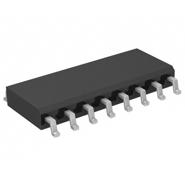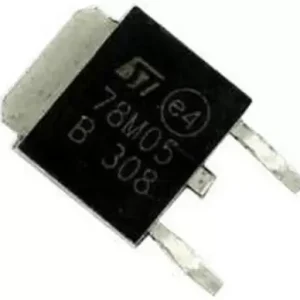L298P ST SOP20
SKU:
L298P
Category: STMicroelectronics
Shipping & Delivery
Related products
78M05ST DPAK
The L78M series of three-terminal positive regulators is available in TO-220, TO-220FP, DPAK and IPAK packages and with several fixed output voltages, making it useful in a wide range of applications. These regulators can provide local on-card regulation, eliminating the distribution problems associated with single point regulation. Each type employs internal current limiting, thermal shutdown and safe area protection, resulting it essentially indestructible. If adequate heat sinking is provided, they can deliver over 0.5 A output current. Although designed primarily as fixed voltage regulators, these devices can be used with external components to obtain adjustable voltage and currents.
CD4021ST SOIC
The HCF4021 is a monolithic integrated circuit fabricated in metal oxide semiconductor technology available in PDIP-16 and SO-16 packages.
This device is an 8-stage parallel or serial-input/serial-output register having common clock and parallel/serial control inputs, a single serial data input, and individual parallel "jam" inputs to each register stage. Each register stage is a D-type, master-slave flip-flop in addition to an output from stage 8. "Q" outputs are also available from stages 6 and 7. Serial entry is synchronous with the clock but parallel entry is asynchronous.
In this device, entry is controlled by the parallel/serial control input. When the parallel/serial control input is low, data are serially shifted into the 8-stage register synchronously with the positive transition of the clock line. When the parallel/serial control input is high, data are jammed into the 8-stage register via the parallel input lines and synchronous with the positive transition of the clock line. The clock input of the internal stage is “forced” when asynchronous parallel entry is made. Register expansion using multiple packages is permitted.
L6561ST SOIC
L6561 is the improved version of the L6560 standard Power Factor Corrector. Fully compatible with the standard version, it has a superior performant multiplier making the device capable of working in wide input voltage range applications (from 85V to 265V) with an excellent THD. Furthermore the start up current has been reduced at few tens of mA and a disable function has been implemented on the ZCD pin, guaranteeing lower current consumption in stand by mode.
Realised in mixed BCD technology, the chip gives the following benefits: micro power start up current 1% precision internal reference voltage (T j = 25°C) Soft Output Over Voltage Protection no need for external low pass filter on the current sense very low operating quiescent current minimises power dissipation
The totem pole output stage is capable of driving a Power MOS or IGBT with source and sink currents of ±400mA. The device is operating in transition mode and it is optimised for Electronic Lamp Ballast application, AC-DC adaptors and SMPS.
L6565ST SOIC
The L6565 is a current-mode primary controller IC, specifically designed to build offline Quasi-resonant ZVS (Zero Voltage Switching at switch turn-on) flyback converters.
Quasi-resonant operation is achieved by means of a transformer demagnetization sensing input that triggers MOSFET's turn-on.
Converter's power capability variations with the mains voltage are compensated by line voltage feedforward. At light load the device features a special function that automatically lowers the operating frequency still maintaining the operation as close to ZVS as possible. In addition to very low start-up and quiescent currents, this feature helps keep low the consumption from the mains at light load and be Blue Angel and Energy Star compliant.
The IC includes also a disable function, an on-chip filter on current sense, an error amplifier with a precise reference voltage for primary regulation and an effective two-level overcurrent protection.





